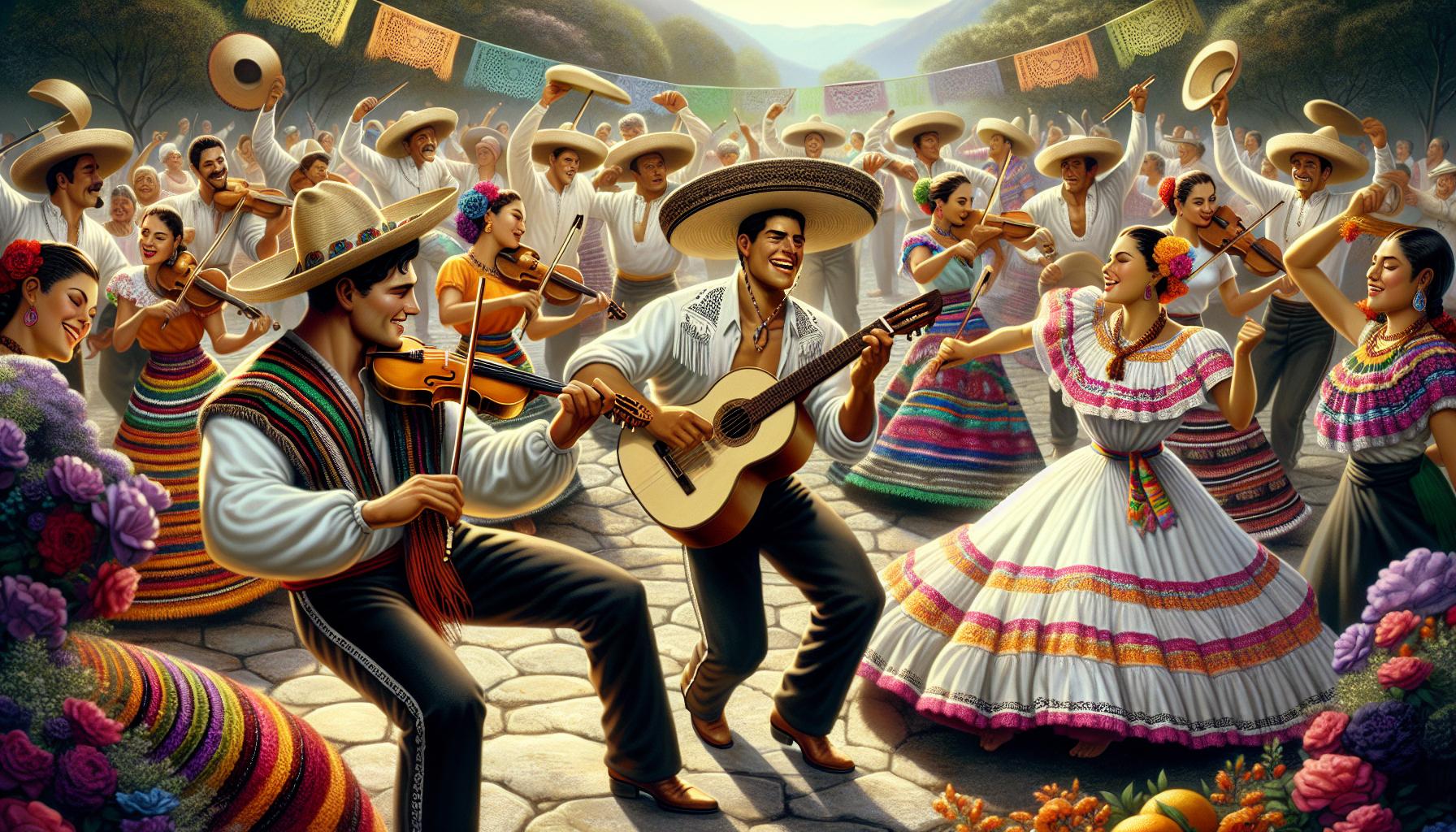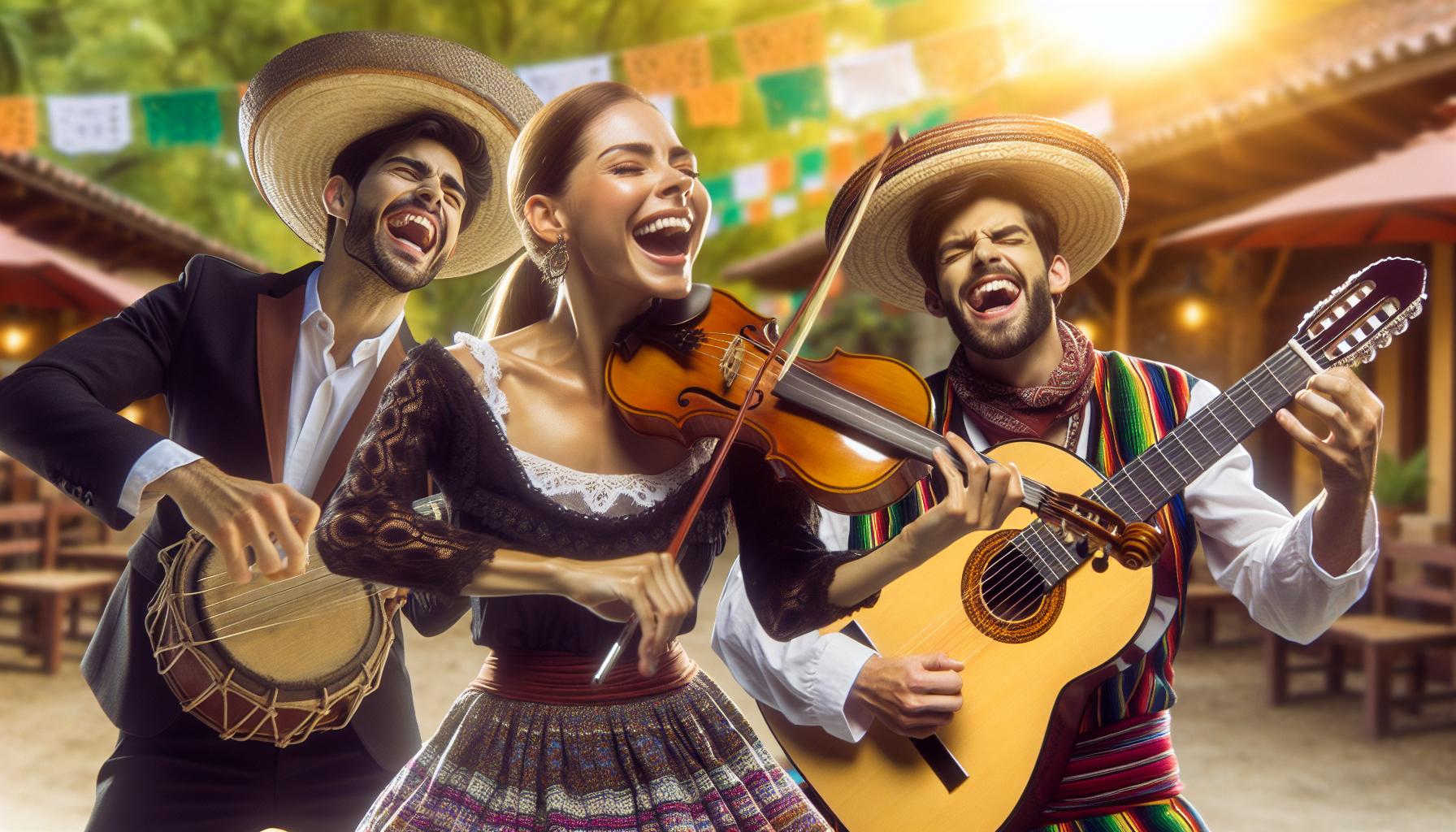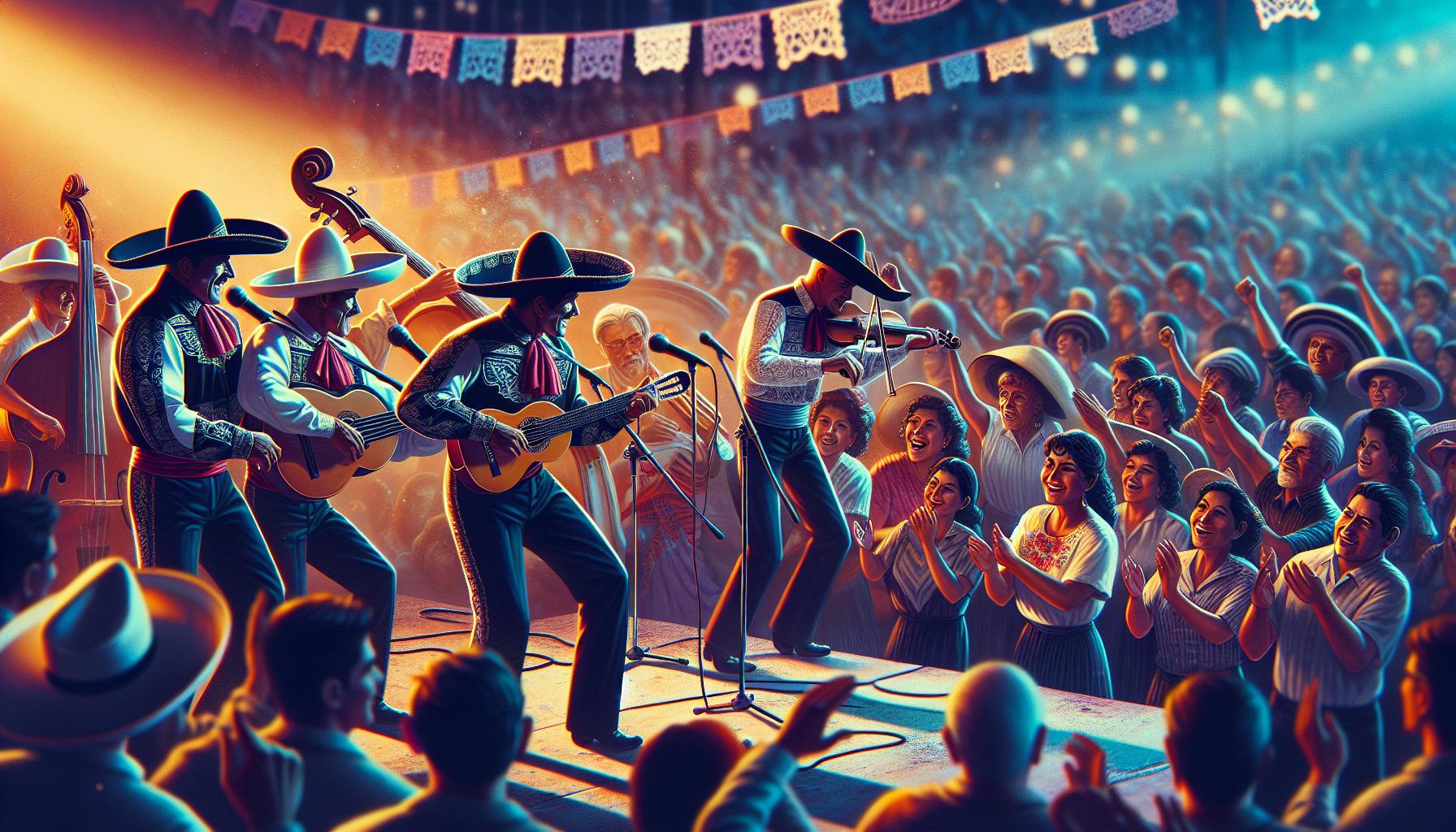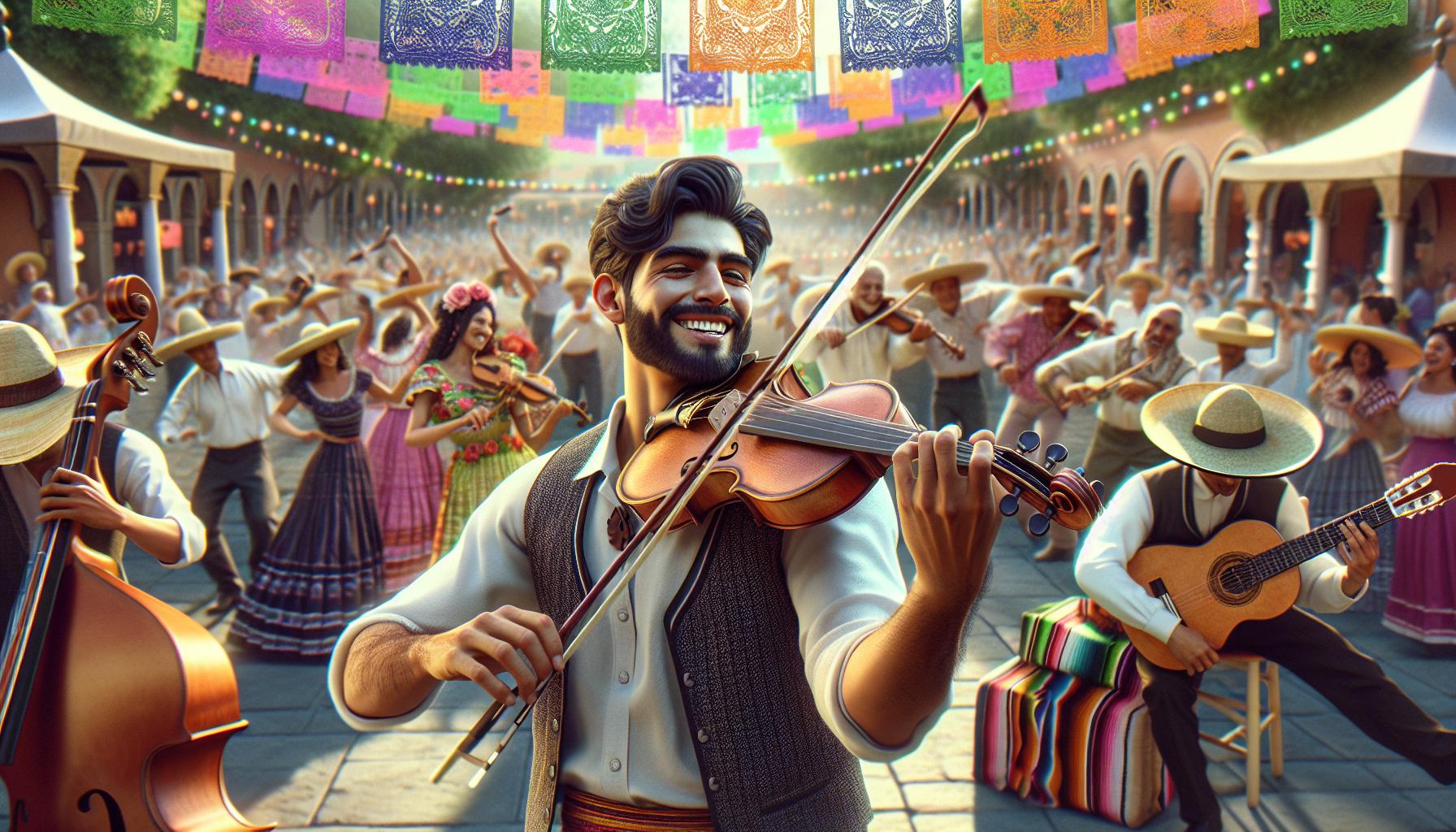When I think of the vibrant sounds of Mexico, huapango music instantly comes to mind. This lively genre, rooted in the rich traditions of the Huasteca region, combines intricate rhythms and heartfelt lyrics that tell stories of love, life, and culture. It’s more than just music; it’s a celebration of community and heritage that resonates deeply with those who experience it.
Huapango captures the essence of Mexican folk traditions, often featuring instruments like the violin, guitar, and jarana. The infectious beat invites everyone to dance, creating an atmosphere of joy and connection. As I explore the world of huapango, I can’t help but feel the passion and pride that comes from this unique musical expression. Join me on this journey to uncover the history, significance, and enduring charm of huapango music.
Key Takeaways
- Cultural Roots: Huapango music originates from the Huasteca region of Mexico, blending indigenous and Spanish influences to create a unique musical form that reflects rich traditions and values.
- Key Instruments: The vibrant sound of huapango comes from the combination of the violin, guitar, and jarana, each contributing distinct melodic and rhythmic elements that drive its energetic atmosphere.
- Community and Connection: Huapango music fosters a strong sense of community through lively performances that encourage audience participation, connecting people and enhancing social gatherings.
- Evolving Tradition: While huapango has evolved significantly since the 19th century, contemporary artists successfully blend traditional elements with modern styles, ensuring the genre’s enduring relevance.
- Prominent Artists: Notable musicians like Los Camperos de Valles and Mara de los Santos play crucial roles in preserving and promoting huapango, showcasing its cultural significance through performances and educational initiatives.
- Celebrate Heritage: Huapango music is a cultural touchstone in Mexico, celebrated during various festivals and events, reinforcing community identity and pride while inviting new generations to engage with its vibrant legacy.
Huapango Music
Huapango music originates from the Huasteca region of Mexico, rich in cultural heritage. This genre features complex rhythms that captivate listeners and invoke traditional Mexican values. The heartfelt lyrics highlight themes such as love, pride, and community, making it relatable to various audiences.
Rhythmic instruments dominate huapango music. The violin, guitar, and jarana form the backbone of its sound, creating an energetic atmosphere. These instruments blend together, producing lively melodies that inspire both listeners and dancers. The syncopated rhythms drive the music, encouraging expressive movement during performances.
Performers often engage directly with the audience, creating a lively connection. This interaction fosters a communal spirit, essential to huapango music’s appeal. Throughout history, huapango has evolved while maintaining its core elements, ensuring its relevance in contemporary settings. Festivals and celebrations frequently feature huapango music, solidifying its role as a cultural touchstone in Mexican society.
Historical Background

Huapango music has deep roots in Mexican culture, particularly in the Huasteca region. The genre reflects a blend of indigenous and Spanish influences, showcasing a rich tapestry of history and tradition.
Origins of Huapango Music
Huapango’s origins trace back to the 19th century, primarily among the Náhuatl-speaking communities. This genre evolved from traditional son music, characterized by its lively rhythms and engaging melodies. Instruments like the jarana, a small guitar, and the violin played crucial roles in its development. The music often accompanied social gatherings, celebrations, and festivals, fostering communal unity through dance and song.
Evolution Through the Years
Huapango music has undergone significant transformation since its inception. In the early 20th century, recordings popularized the genre beyond its regional confines, allowing it to reach a broader audience. The integration of new instruments and influences, such as those from mariachi, further enriched huapango’s sound. Recently, contemporary artists blend traditional elements with modern styles, ensuring the genre remains relevant and vibrant in today’s music scene.
Key Characteristics

Huapango music features distinct elements that contribute to its vibrant and lively sound. The unique blend of instruments and rhythms creates a rich auditory experience that resonates with audiences.
Instruments Used in Huapango
Violin, guitar, and jarana serve as primary instruments in huapango music.
- Violin: The violin produces expressive melodies, often leading the musical narrative.
- Guitar: The guitar adds harmonic support and rhythmic strumming, enhancing the overall texture.
- Jarana: This small, guitar-like instrument offers rhythmic accents, driving the danceable energy of huapango.
These instruments work together to create a harmonious blend that captures the essence of this musical genre.
Rhythmic Patterns and Styles
Huapango employs intricate rhythmic patterns that engage both performers and audiences.
- Syncopation: This technique creates unexpected shifts in rhythm, adding excitement and complexity.
- Two- or Four-beat measures: Common structures that underpin the engaging melodies and lively dance tempos.
- Polyrhythms: Layered rhythms contribute to a rich soundscape, inviting movement and interaction.
These dynamic musical styles encourage connection between performers and listeners, making huapango music an integral part of celebrations and social gatherings in Mexican culture.
Prominent Huapango Artists

Huapango music showcases a variety of talented artists who have significantly shaped the genre. Their contributions highlight the vibrant spirit and cultural richness of this musical form.
Influential Musicians
- Los Camperos de Valles: This ensemble is recognized for preserving the traditional huapango sound. Their performances often feature lively rhythms and passionate lyrics that engage audiences.
- La Orquesta Huasteca: This group blends traditional huapango with contemporary influences, attracting new listeners while honoring the genre’s roots. Their innovative style fosters appreciation across generations.
- Chicamayel: Known for their vibrant performances, they incorporate traditional instruments while experimenting with modern sounds. Their music resonates with both young and older fans.
- Mara de los Santos: As a prominent vocalist, she breathes life into classic huapango songs. Her emotional delivery and deep understanding of the genre captivate listeners.
- Los Arrieros: This duo emphasizes storytelling within their music, drawing heavily from themes of love and community. Their engaging narratives contribute significantly to the culture of huapango.
- Preservation of Traditions: Many artists focus on maintaining traditional huapango forms, ensuring that the genre’s cultural significance remains intact while sharing it with modern audiences.
- Fusion of Styles: Numerous musicians experiment by blending huapango with other genres, such as rock or jazz. This fusion introduces huapango to diverse audiences, expanding its reach.
- Promotion of Festivals: Artists actively participate in cultural festivals and events, showcasing huapango on various stages. Their involvement helps sustain interest and appreciation for the genre.
- Educational Initiatives: Some musicians dedicate time to teaching huapango at community centers or schools. These efforts foster a new generation of musicians and listeners, cultivating interest in this unique genre.
- Innovative Recordings: Many artists produce innovative recordings that highlight the intricate rhythms and melodies characteristic of huapango. Their work ensures the genre evolves while remaining authentic.
Cultural Significance
Huapango music holds a vital place in Mexican culture, resonating through festivals and community gatherings. Its rhythmic energy captures the essence of Mexican identity and collective spirit.
Huapango in Festivals and Celebrations
Huapango music is integral to numerous festivals and celebrations throughout Mexico, enhancing the atmosphere with its lively beats and engaging melodies. Events such as the Feria Huasteca and regional fiestas showcase huapango performances, uniting people in joyful expression. Dancers often perform traditional steps, while musicians encourage audience participation. The vibrant sound of huapango transforms gatherings into memorable experiences, fostering a sense of camaraderie that strengthens community bonds.
Huapango and Community Identity
Huapango serves as a powerful symbol of community identity, particularly among Náhuatl-speaking populations. The music reflects the shared history, values, and traditions of these communities, reinforcing social cohesion. Musicians evoke pride through lyrics that often celebrate local stories and customs. The blend of traditional and contemporary elements in huapango allows communities to navigate their cultural heritage while embracing modern influences. This adaptability ensures huapango remains a key expression of cultural identity, allowing individuals to connect with their roots and celebrate their heritage.
Huapango Music
Huapango music truly captures the essence of Mexican culture. Its infectious rhythms and heartfelt lyrics make it a celebration of life and community. I find it fascinating how this genre has evolved while still honoring its roots. The way contemporary artists blend traditional sounds with modern influences keeps huapango alive and thriving.
Attending a huapango performance is more than just enjoying music; it’s about experiencing a vibrant cultural expression that connects people. Whether it’s at a festival or a casual gathering, the energy and spirit of huapango create lasting memories. I encourage everyone to explore this lively genre and embrace the joy it brings.
